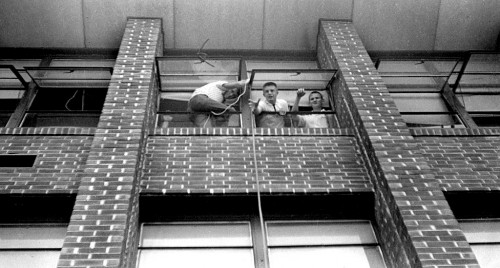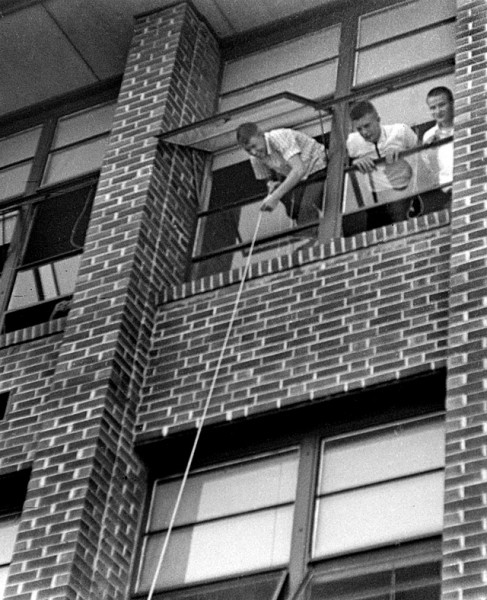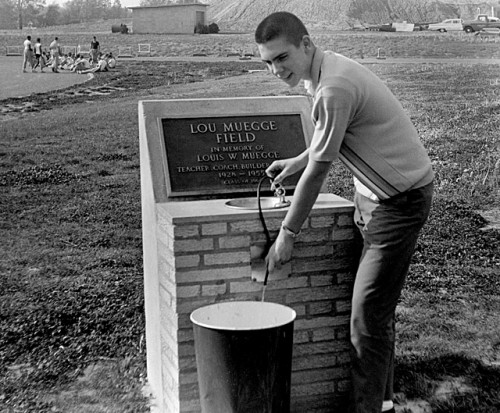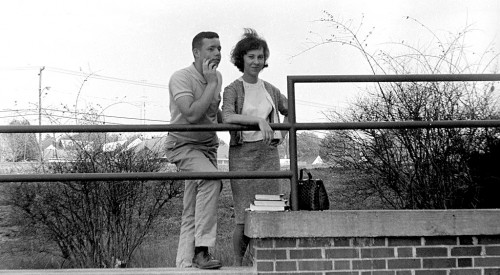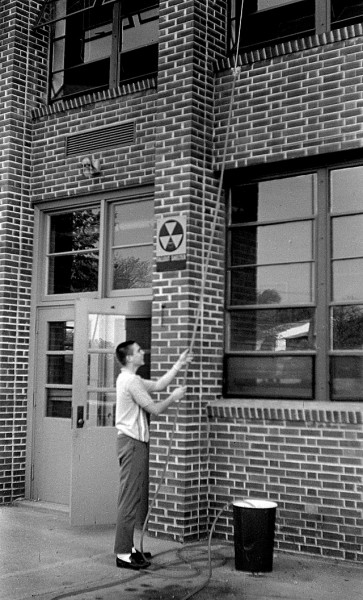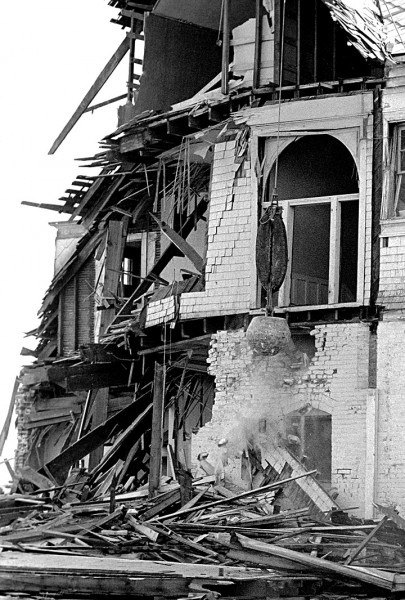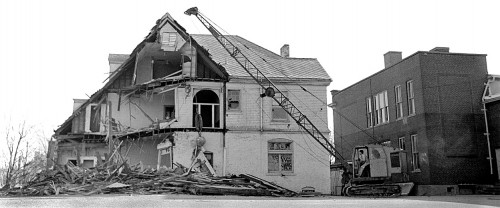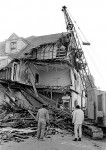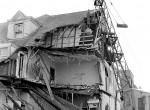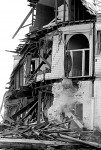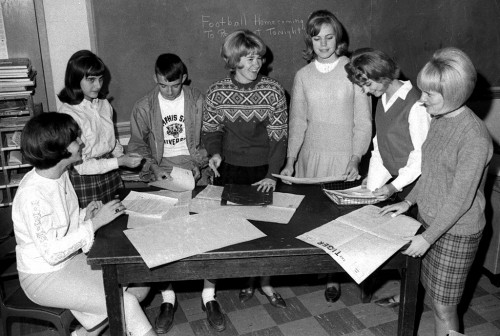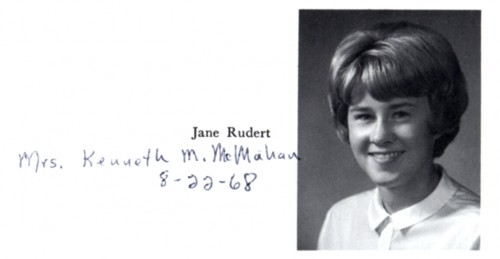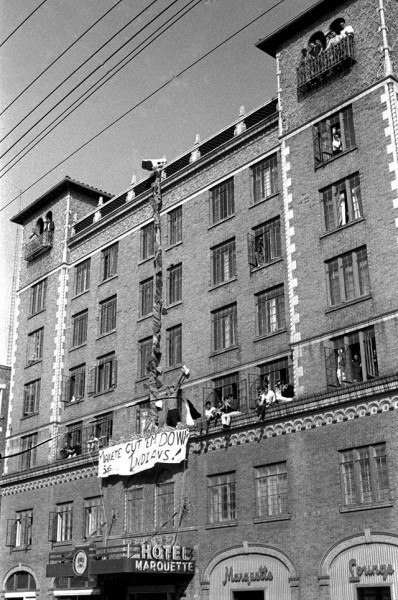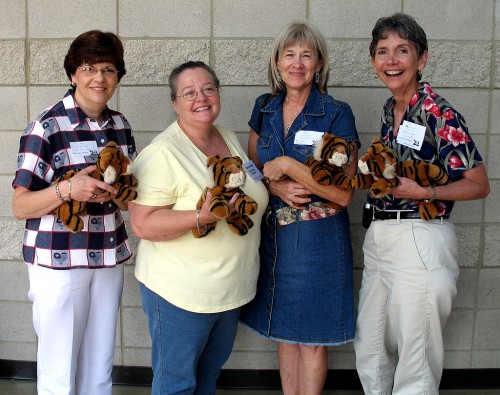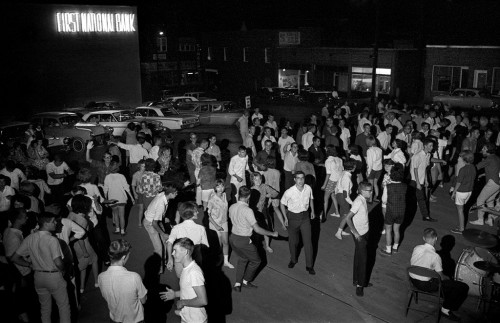 I was trading some messages with Nicolette Brennan from the City of Cape about a picture of Broadway for a project she’s working on. That got me to thinking about how many Broadway stories I’ve done. I’ve documented the street from the river’s edge to the old Colonial Tavern on the west end. Click on the photos to make them larger and click on the links to go to the original story.
I was trading some messages with Nicolette Brennan from the City of Cape about a picture of Broadway for a project she’s working on. That got me to thinking about how many Broadway stories I’ve done. I’ve documented the street from the river’s edge to the old Colonial Tavern on the west end. Click on the photos to make them larger and click on the links to go to the original story.
So many teens were dancing at the old Teen Age Club at Themis and Spanish that the floor was bouncing and a city inspector shut ’em down. They moved the dance to the bank parking lot at the corner of Main and Broadway.
Crash at the Colonial Tavern
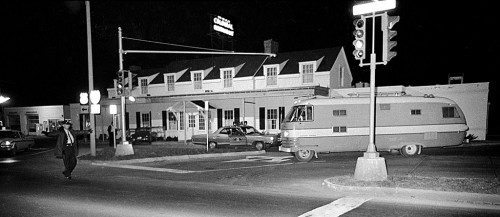 The Colonial Tavern was my dad’s morning coffee stop where everybody would gather to hash over the previous night’s Cardinal game. A sports car picked this night to plow into the building that was at the west end of Broadway.
The Colonial Tavern was my dad’s morning coffee stop where everybody would gather to hash over the previous night’s Cardinal game. A sports car picked this night to plow into the building that was at the west end of Broadway.
The park that got away
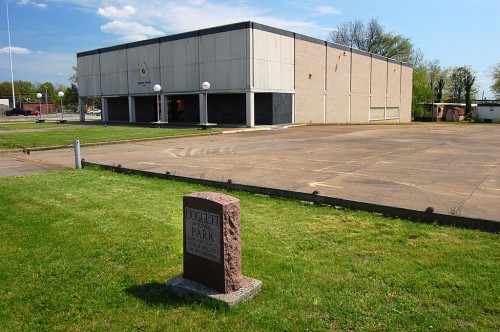 A three-acre tract of land on the south side of Broadway east of Hwy 61 was donated by the Doggett family with the understanding that the the land would be developed into a park similar to Dennis Scivally Park on Cape Rock Drive.
A three-acre tract of land on the south side of Broadway east of Hwy 61 was donated by the Doggett family with the understanding that the the land would be developed into a park similar to Dennis Scivally Park on Cape Rock Drive.
The family felt that the tract hadn’t been improved in the past 10 years, so they filed a suit to reclaim the land. A granite marker with the name “Doggett Park” next to the Masonic Temple parking lot is all that remains of the park.
Crash at Broadway and Fountain
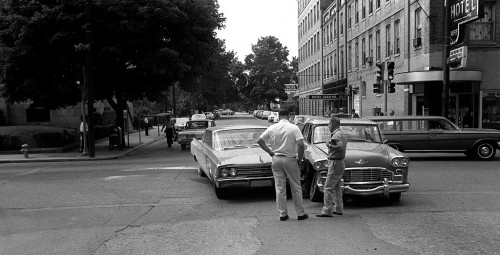 Sometimes what you think is going to be an inconsequential story resonates with readers. Fred Kaefpfer, who was directing traffic at this crash at the corner of Broadway and Fountain, turned out to be Cape’s singing policeman. It became one of the most-commented stories of the early blog. The Idan-Ha Hotel shows up in the background of the photo.
Sometimes what you think is going to be an inconsequential story resonates with readers. Fred Kaefpfer, who was directing traffic at this crash at the corner of Broadway and Fountain, turned out to be Cape’s singing policeman. It became one of the most-commented stories of the early blog. The Idan-Ha Hotel shows up in the background of the photo.
Idan-Ha Hotel burns
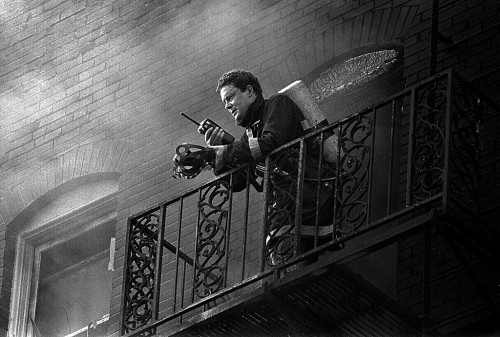 The Idan-Ha Hotel, which had caught fire in 1968, caught fire again in 1989.
The Idan-Ha Hotel, which had caught fire in 1968, caught fire again in 1989.
Star Service Station – Cigarettes 25 cents a pack
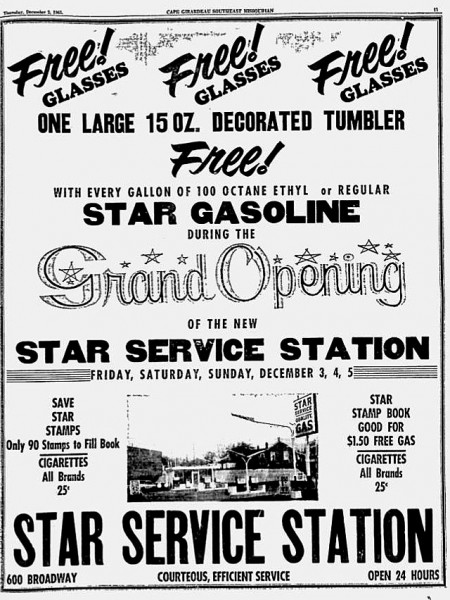 The Star Service station at the corner of Broadway and Frederick gave stamps with your gas. Ninety stamps would get you $1.50 worth of free gas.
The Star Service station at the corner of Broadway and Frederick gave stamps with your gas. Ninety stamps would get you $1.50 worth of free gas.
Annie Laurie’s used to be Brinkopf-Howell’s
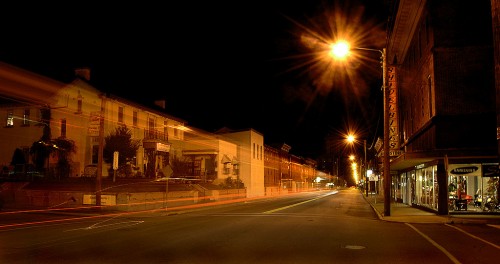 Niece Laurie Everett’s Annie Laurie’s Antiques, across the street from the Star Service Station used to be a funeral home. It’s the top-rated antique shop in Cape County now. Shivelbines Music, across the street, got a new sign in November.
Niece Laurie Everett’s Annie Laurie’s Antiques, across the street from the Star Service Station used to be a funeral home. It’s the top-rated antique shop in Cape County now. Shivelbines Music, across the street, got a new sign in November.
Bob’s Shoe Service
 Bob Fuller’s Bob’s Shoe Service was where I stocked up on Red Wing boots, the ideal footwear for a photographer. They’d shine up acceptably for formal wear (at least as formal as I ever got), but you could wade water and walk on fire with no worries.
Bob Fuller’s Bob’s Shoe Service was where I stocked up on Red Wing boots, the ideal footwear for a photographer. They’d shine up acceptably for formal wear (at least as formal as I ever got), but you could wade water and walk on fire with no worries.
507-515 Broadway
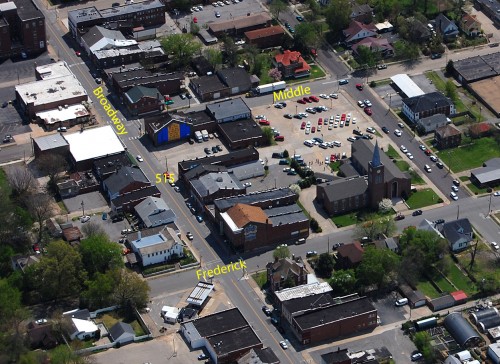 The 500 block of Broadway has had an interesting past.
The 500 block of Broadway has had an interesting past.
Discovery Playhouse – Walthers’s Furniture
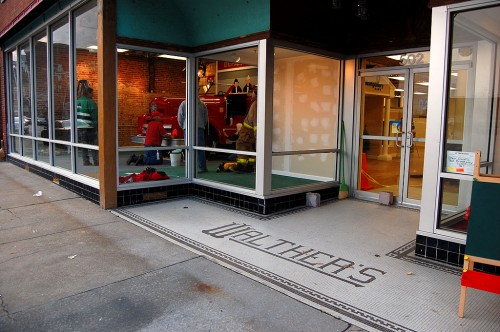 I was glad to see some life around the old Walther’s Furniture Store and Funeral Home. The Discovery Playhouse has become popular in a short period of time. Here is was before it opened.
I was glad to see some life around the old Walther’s Furniture Store and Funeral Home. The Discovery Playhouse has become popular in a short period of time. Here is was before it opened.
Lutheran Mural Building razed
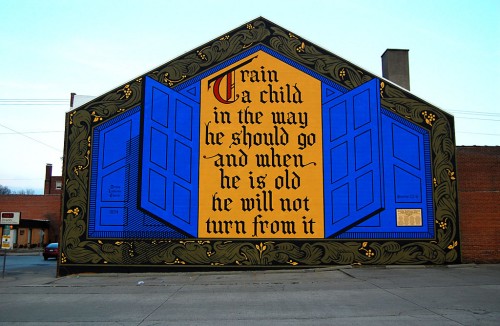 When I shot the Discovery Playhouse, I had no idea that the landmark building across the street was going to be torn down within a couple of years. It was best known for the huge blue mural on its side.
When I shot the Discovery Playhouse, I had no idea that the landmark building across the street was going to be torn down within a couple of years. It was best known for the huge blue mural on its side.
Rialto Theater roof collapses
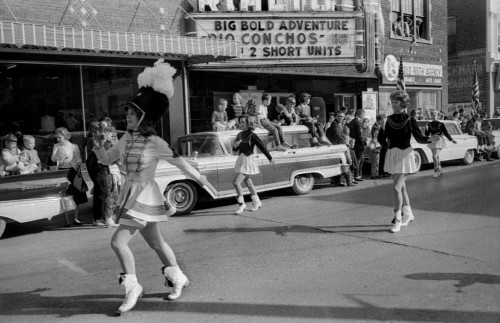 A rainstorm caused the roof of the old Rialto Theater to collapse in 2010. This story contains a bunch of links, including one that tells how I met Wife Lila there when she was working as a cashier. This picture is of the 1964 Homecoming Parade.
A rainstorm caused the roof of the old Rialto Theater to collapse in 2010. This story contains a bunch of links, including one that tells how I met Wife Lila there when she was working as a cashier. This picture is of the 1964 Homecoming Parade.
Broadway Theater is still impressive
 I managed to talk my way into the Broadway Theater on a cold December day. It still has the feel of the premier theater of the city.
I managed to talk my way into the Broadway Theater on a cold December day. It still has the feel of the premier theater of the city.
What’s going to happen to the Esquire?
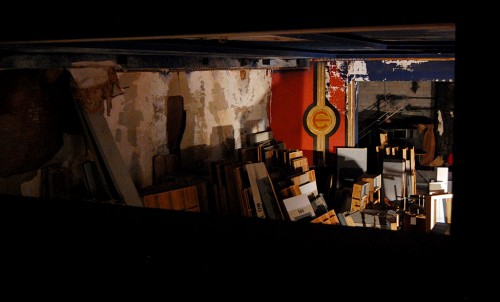 When I did this story in October 2011, it looked like the Esquire Theater was going to get new life. A new owner had an ambitious plan to renovate it. The latest stories in The Missourian make it sound like the project is unraveling.
When I did this story in October 2011, it looked like the Esquire Theater was going to get new life. A new owner had an ambitious plan to renovate it. The latest stories in The Missourian make it sound like the project is unraveling.
Here’s a piece I did about its art deco history. In September 1965, I used infrared flash and film to capture kids watching The Beatles movie Help! It was the first (and only) time I used that technique.
Pladium / D’Ladiums – it’s still the same
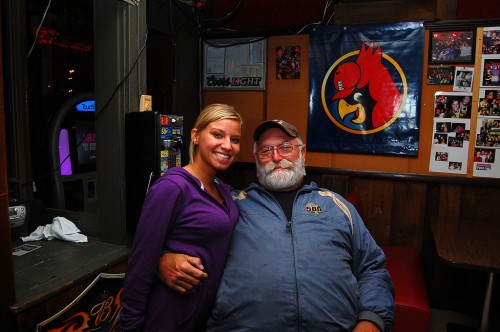 I wasn’t a pool player, but those who were spent their time in the Pladium (now D’Ladiums) across from Houck Stadium or the Pla-Mor, next to Wayne’s Grill and the Esquire. The Beav still rules the roost at D’Ladiums.
I wasn’t a pool player, but those who were spent their time in the Pladium (now D’Ladiums) across from Houck Stadium or the Pla-Mor, next to Wayne’s Grill and the Esquire. The Beav still rules the roost at D’Ladiums.
Vandeven’s Merchantile
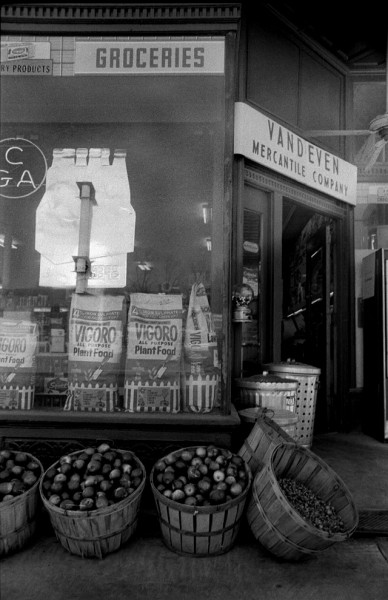 Howard’s Athletic Goods and a handful of other businesses have moved into the building at the corner of Broadway and Pacific over the years, but it’ll always be Vandeven’s Merchantile to me.
Howard’s Athletic Goods and a handful of other businesses have moved into the building at the corner of Broadway and Pacific over the years, but it’ll always be Vandeven’s Merchantile to me.
It dawns on me that I have even more photographs along Broadway – way too many to inflict on you in one shot. I’ll hold off putting up the rest of them until another day. Don’t forget to click on the links to see the original stories.

